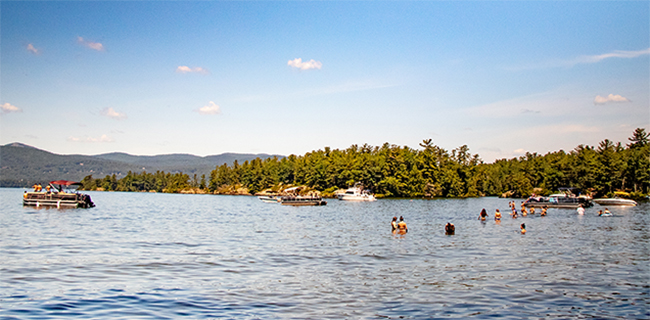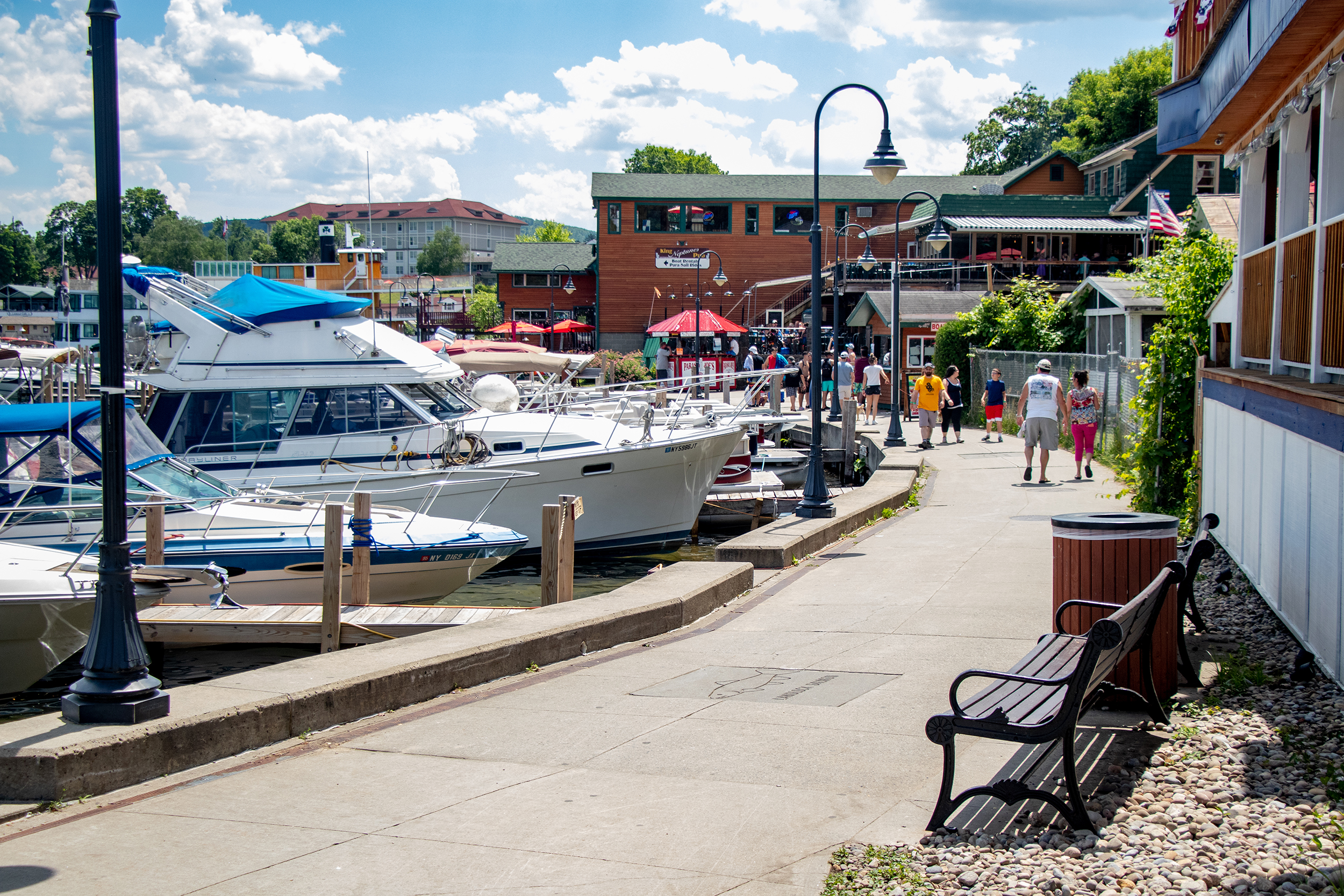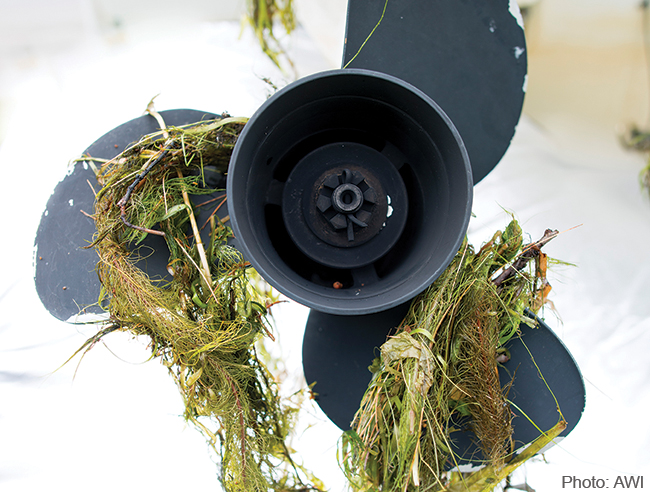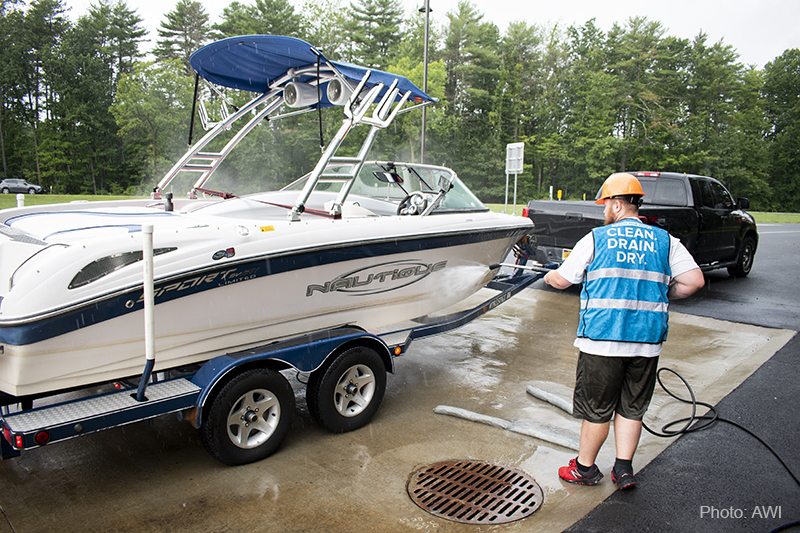
We Need to Better Protect Water, Tourism, and Jobs in the Adirondacks Now
The current New York State Aquatic Invasive Species Transport Law is inadequate to protect the waters in the Adirondack Park from invasive species. This law asks boaters to “take reasonable precautions” when launching into any waterbody. Yet research indicates that aquatic invasive species infestations have continued despite this transport law. Since 2014, the year the transport law began, 25 aquatic invasive species infestations have occurred in Adirondack waters.

Our Objective?
To amend New York State law to grant the Department of Environmental Conservation (DEC) the authority to inspect and decontaminate watercraft in the Adirondack Park to prevent new aquatic invasive species infestations.
How You Can Help
Please take action by sending emails to New York State Lawmakers urging them to strengthen the Aquatic Invasive Species Transport Law to close the invasive species loophole for the Adirondacks.
Clean Water = Jobs
Aquatic Invasive Species = Economic Harm
 Tourists enjoy the Lake George waterfront
Tourists enjoy the Lake George waterfront
The Adirondack Park contains more than 3,000 lakes, 8,000 ponds, and more than 1,500 miles of rivers, fed by an estimated 30,000 miles of brooks and streams. Clean water in Adirondack lakes, rivers, and streams is the lifeblood of its residents and visitors, and important to the people and the economy of the entire state. Clean water is a central attraction that brings more than 12 million visitors to the region, benefiting hotels, restaurants, marinas, fishing guides & outfitters, and retail stores.
The Park’s tourism economy is severely harmed by aquatic invasive species. Fishing tourism is harmed by loss of fish species, clogged fishing equipment, and jammed boat propellers caused by Eurasian watermilfoil and the spiny water flea. Sharp zebra mussels and thick vegetation at popular beaches and swimming areas also harm waterfront tourism. Furthermore, shoreline property values decline when it becomes known water quality has become poor in the area.
 A motorboat propeller covered with invasive aquatic plants
A motorboat propeller covered with invasive aquatic plants
Aquatic invasive species infestations are difficult and expensive to control once they have made their way into the water. Invasives reduce biodiversity, hurting water quality. When water quality is impaired, we see harmful consequences to fishing, boating, and shoreline real estate.
What Aquatic Invasive Species Prevention Strategies Currently Exist?
The Adirondack Park has a robust and well-staffed system of voluntary aquatic invasive species inspection and decontamination stations strategically located throughout the Park. (Lake George and Loon Lake in Warren County have mandatory aquatic invasive species boat inspection requirements.) The inspection process takes 5 minutes, while the decontamination process takes no more than 10 minutes if a boat is suspected of having invasive species.
Currently, the inspection station model is backed by a state statute asking boaters to voluntarily take “reasonable precautions” to clean, drain, and dry their watercraft before launching in New York State waters (ECL § 9-1710). The clean, drain, and dry method effectively prevents the transfer of aquatic invasive species from one waterbody to another but the voluntary model has not kept Adirondack waters safe. Only a fraction of Adirondack waters is regularly monitored for aquatic invasive species infestations.
 Adirondack Welcome Center’s free boat washing and decontamination station
Adirondack Welcome Center’s free boat washing and decontamination station
Aquatic Invasive Species Inspection Stations Are Underutilized
Adirondack Council staff audited select aquatic invasive species inspection stations on peak holidays (Memorial Day and Independence Day weekends). Staff consistently observed that 85% of trailered motorboats passed by these stations. This clearly demonstrates the loophole in the current statute. The current law’s voluntary program does not guarantee a clean future for waters in the Adirondack Park. More needs to be done.
Evidence is backed up by public acknowledgment from the program that only a fraction of the boats entering Adirondack waters is currently getting inspected. The aquatic invasive species inspection system is largely funded through the Environmental Protection Fund and while it is robust and offers much-needed protections, we must strengthen its efficacy.
Underutilization of boat washing stations and the continual spread of aquatic invasive species will not only impact the Park’s natural resources but will also be a significant economic burden on the state. A single clean-up project can cost as much as $400,000 per year and never fully eradicate the invasive of concern.
The good news is most Adirondack waters do not yet have aquatic invasive species infestations – and we can protect the rest if we take action.
How Do We Better Protect Adirondack Waters This Year?
Currently, 17 states have the statutory authority to inspect watercraft for aquatic invasive species contamination. Furthermore, 14 states currently have the statutory authority to decontaminate watercraft suspected of harboring invasive species. New York State is not one of those states. The current Aquatic Invasive Species Transport Law is set to expire on June 1, 2021. We urge lawmakers to close the invasive species loophole by granting the DEC authority to inspect and decontaminate watercraft in the Adirondack Park to protect the North Country jobs that depend on clean Adirondack water.
But Wait…Will This Approach Be Burdensome?
No. This solution does not require additional funding, staffing, or infrastructure. This recommended approach is not a mandatory program. The DEC would still have discretion and flexibility to work with local governments, lake associations, and non-profits to ensure that the system works well for the entire Adirondack Park.




